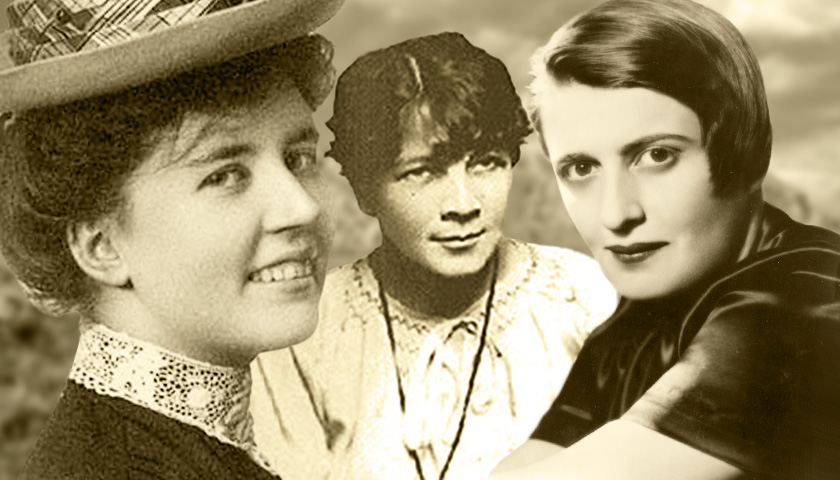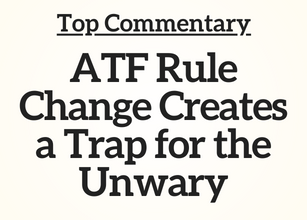by Stephen Cox
People on the American Right can be forgiven if they don’t know their own history. After all, American political history is almost exclusively written by people on the Left. Timothy Sandefur’s new book Freedom’s Furies: How Isabel Paterson, Rose Wilder Lane, and Ayn Rand Found Liberty in an Age of Darkness, does something to solve this problem.
Before there was Rush Limbaugh, before there was William F. Buckley, before, even, there was Russell Kirk, there was a small band of intellectuals opposing the great wave of statism that washed ashore with the New Deal. Everyone in that band was an interesting person – you had to be interesting to oppose such an overwhelming trend. Three of the most interesting are the subjects of Sandefur’s book:
Ayn Rand (1905-1982), who by her authorship of The Fountainhead and Atlas Shrugged became one of the world’s most popular novelists.
Isabel Paterson (1886-1961), a novelist, literary critic, Rand’s political mentor, and one of the wittiest people of her time.
Rose Wilder Lane (1886-1968), journalist and story writer, who collaborated with her mother, Laura Ingalls Wilder, to produce the Little House on the Prairie books.
These women led adventurous lives. Rand, the child of a Russian Jewish family, escaped from the Soviet Union to America when she was 21, and supported herself, often with great difficulty, until the unlikely success of her defiantly anti-collectivist books.
Lane was born on the Dakota frontier, and as a good daughter of the frontier, was determined to do as she pleased. She became an itinerant newspaperwoman and author of fiction. In the 1920s she took up residence in Albania, of all places, having driven there from Paris in a Model T named Zenobia. During World War II, she was investigated by the FBI because she wrote a note criticizing Social Security and delivered what was considered an “extremely seditious” speech to, of all things, the local Lions Club.
Paterson, one of nine children of an impoverished Canadian-American family, was another frontier woman who supported herself by writing. In the 1920s she won fame as the author of a Sunday column in New York Herald Tribune Books, a nationally popular journal. Her weekly visitations combined erudite literary analysis with slashing satires of the so-called liberals and pretended conservatives who, she believed, were destroying both the American constitutional system and the American economy. “Destitution,” she said, “is easily distributed. It’s the one thing political power can insure you.”
Paterson was the intellectual senior of the three; she attained her libertarian-conservative views by the early 1920s. She influenced Lane and crucially influenced Rand – without, to her regret, changing Rand’s views about religion. Rand was the village atheist; Paterson held that the existence of God was axiomatic for any charter of human freedom: people were, indeed, “endowed by their creator with certain unalienable rights.” Lane had her own reasons for agreeing and ultimately disagreeing with the others.
But the similarities were more impressive than the differences. These three women had known hard times – in fact, terrible times – but they were convinced that the American creative spirit could triumph over anything, as long as it was left free to operate. They understood that in opposing the statism of their own time they were defending liberty at all times and places. As intellectuals they weren’t defined by their opposition to the New Deal; they spoke to universal principles of freedom and common sense. And they understood how to do one of the toughest jobs in the world. They understood how to write.
Here’s Lane, in her essay “Credo,” on the significance of automobiles in capitalist America:
California is overwhelmed by scores of thousands of penniless families arriving in them, and hunger marchers do not march but travel in trucks. And these people should have automobiles; that is my point. They should have them, and individualism has somehow, without plan or any such definite purpose, seen to it that they do have them.
Here’s Paterson, in the Herald Tribune, on the moral character of modern liberal politicians:
A government official is a man who would cheat even at solitaire. . . . The power to do things for people is also the power to do things to people – and you can guess for yourself which is likely to be done.
And here’s Rand, in Atlas Shrugged, prophetically describing the current occupant of the White House:
The Head of the State was a man who possessed the quality of never being noticed. In any group of three, his person became indistinguishable, and when seen alone it seemed to evoke a group of its own, composed of the countless persons he resembled.
I wonder if you have the same experience I do: I read a lot of political writing, and even when I agree with it, I usually can’t remember who produced it five minutes later. It’s all “issues” and no personality.
You never feel that way about Rand or Lane or Paterson. Few political writers are as vivid and entertaining. You’re not just interested in their ideas; you’re interested in the special things they do with them. And guess what? A lot of the ideas that we think are so new and important today were discovered by Rand or Lane or Paterson a mere 80 or 90 years ago. They’re still challenging. When you realize that, you get a new perspective on the Right – on its continuity, its inspiration, and its fun.
Lane, Rand, and Paterson had a large – in Rand’s case, an immense – popular readership. Their influence on intellectuals was significant, though varied. When in 1955 William F. Buckley founded National Review, the shaping force of a new conservatism, he eagerly wooed Paterson to write for it – and stoutly resisted the ideas of Rand. But all three women stood as far from the intellectual establishment as it was possible to get. “Mostly what ails the alleged intellectuals,” wrote Paterson, “is that they aren’t.” Long before the internet, the three real though uncredentialed intellectuals had identified the most important audience of political discourse – individual, often lonely, Americans who thought without being paid to think – and had started reaching out to them. These were the people who counted; these were the Americans who made, and keep making, the conservative revolution. As Paterson wrote in her book of political theory, The God of the Machine, “everything can be done for a living future.”
Sandefur tells the story of the founding generation of the freedom movement, and because he knows how to write, he tells it in a clear and compelling way. He has not relied simply on published sources – such as (ahem!) my own biography of Paterson, The Woman and the Dynamo. He has also done what is known in the trade as “archival research.” It’s important, and it shows. He shows exemplary fairness toward women who were – with good reason – thorny personalities. He demonstrates how smart and compelling they were.
He does something else as well: He provides a vivid picture of their immediate adversary, the conglomeration of statisms known as the New Deal. If there was ever a regime that didn’t conform to its beneficent popular image, the New Deal was it. Consider the Agricultural Adjustment Administration, founded on the idea that to cure a depression you need to keep prices up; you need to inflate them artificially and make everyone pay them. To raise the price of agricultural products, farmers were given money not to produce, crops were plowed under, livestock was killed by the millions, and the cost of food was increased for an already suffering population. Also “adjusted” were the lives of small farmers and sharecroppers, often black, who were prohibited from producing marketable goods but who didn’t benefit from the subsidies shelled out to landlords. “The AAA,” as Sandefur explains, “effectively paid their employers to fire and evict them.”
Or consider the centerpiece of the New Deal, the National Recovery Administration, colorfully though unlovingly detailed by Sandefur. The NRA was empowered to force participants in every type of business to adopt a “code of fair competition” stipulating what could be sold, when it could be sold, and what price it could be sold for. Don’t try to compete by lowering your prices – your “unfairness” could send you to jail. The NRA was so absurd that, as Sandefur observes, when the act that justified it went before the Supreme Court and “federal lawyers tried to explain [its] requirements to the justices, they had difficulty because members of the audience kept interrupting them with laughter.”
The NRA got knocked down by the Court. Other New Deal creations remained, as foundations of today’s state socialism, of all those acronymic agencies dedicated to adjusting our lives in every conceivable way. It was during the New Deal that politicians and “thinkers” started redefining the American dream as equal access to state management. But that was also the period when Lane, Rand, and Paterson, and other people who could think and write, began a radical clarification of ideas. The eventual result was the modern Right.
Sandefur’s book is about that movement of ideas, which began in a time eerily similar to our own. It’s a book for people who feel as Paterson did. “Right now,” she wrote, “it is a terrible thing to be a rugged individualist; but we don’t know what else to be except a feeble nonentity.”
– – –
Stephen Cox is Distinguished Professor of Literature, Emeritus, at UC San Diego, and the author of American Christianity: The Continuing Revolution, The Big House: Image and Reality of the American Prison, The Titanic Story, and many other books.
Photo “Rose Wilder Lane” by Herbert Hoover Presidential Library and Museum. Photo “Ayn Rand” by Talbot. Photo “Isabel Paterson” by Libertarianism.org. Background Photo “Frontier Sandstone” by James St. John. CC BY 2.0.









WOW…. I love this kinda stuff…NEED MORE….AND LOTS OF IT…..MAKE IT INTO MOVIES. DEFINITELY GONNA READ IT. Hope there is more. keep em comin….